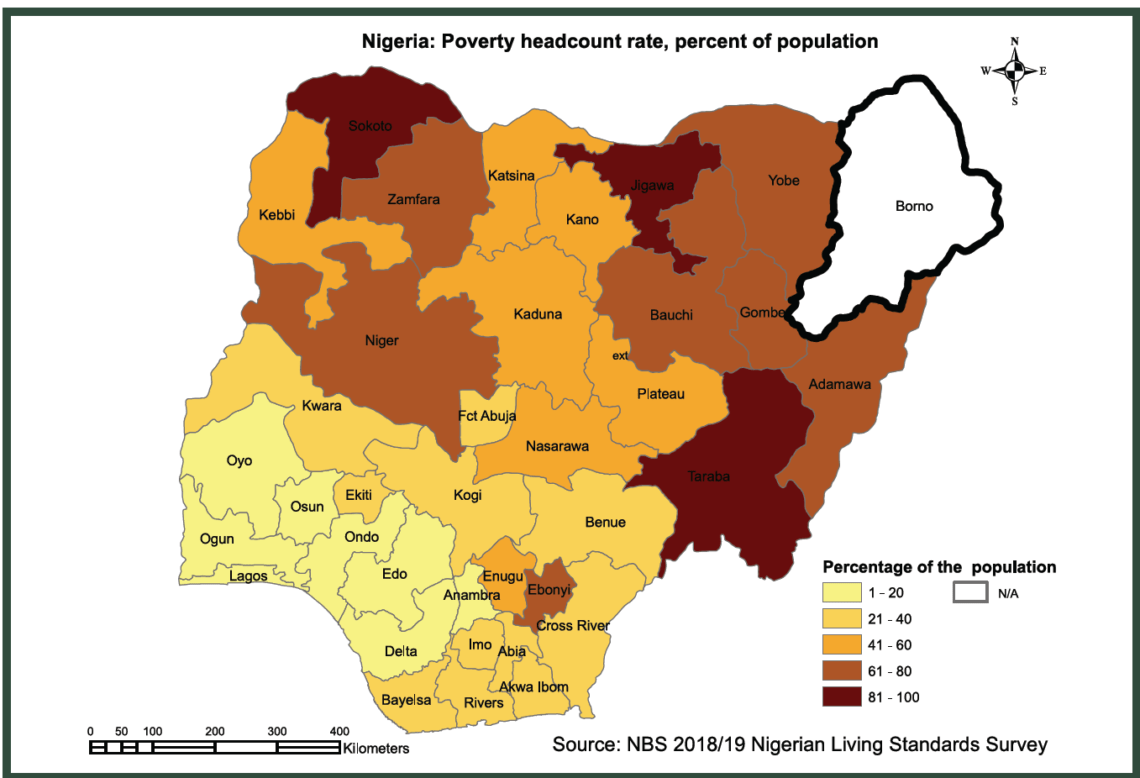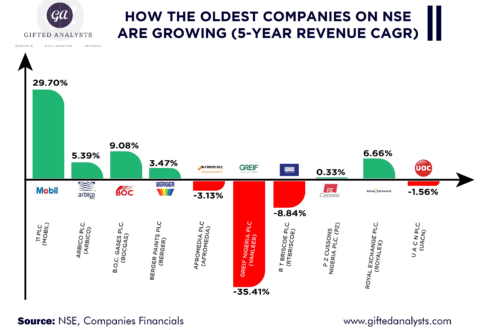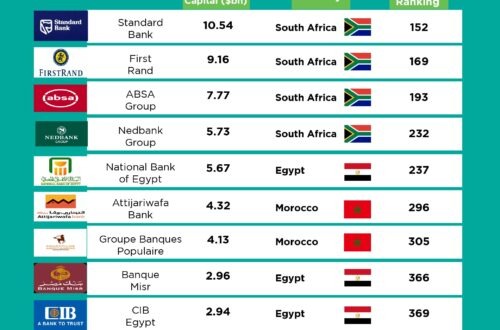
Five Things we Learnt from the 2019 NBS Poverty and Inequality Report
Introduction
On Monday 4th May 2020, the National Bureau of Statistics (NBS) released the executive summary of its 2019 poverty and inequality report in Nigeria. The report measures and estimates the poverty rate and living standards in Nigeria by making use of the Nigerian Living Standards Survey (NLSS). It is representative at the state level with a sample size of 22,110 households, focusing on increasing the understanding of living conditions of the Nigerian population. The survey collected data on household and individual demographics (age, gender, marital status, among others), access to education, health and basic services, employment, assets, and income.
These are the key things learnt from the report:
82.9 Million Nigerians Live on Less than N377 in a Day
The report shows a poverty line equal to N137,430 per person in a year. This explains that anybody living less than that amount per year, is considered to be poor by national standards. Dividing the figure by 365 days in a year, translates to approximately N377 per day. With an estimated population of 206 million and the NBS poverty rate of 40.1%, it therefore shows that approximately 82.9 million Nigerians are living below the poverty line. It also means that on the average, 4 out of every 10 Nigerians have their real per capita expenditure less than N137,430 in a year. In the urban regions, 18% of the population live on less than N377 per day while 52.1% of the population in the rural region live on less than that same amount in a day.
88% of the 17 States above the National Poverty Average are in the Northern Region
With the exception of Ebonyi (79.76% poverty rate) and Enugu (58.13% poverty rate), the remaining 15 states with poverty rate above 40.1% are situated in the Northern part of the country. From the data, Sokoto state has the highest proportion of people living on less than N137,430. This is because it has a poverty rate of 87.73% followed by Taraba state which has poverty rate of 87.72%, which is just 1bps less than Sokoto state.
States with the lowest poverty rate (poverty rate below the national average) are prevalent in the southern part of the country, with Lagos state having the lowest poverty rate (4.5%) in the country, followed by Delta state which has a poverty rate of 6%. Osun state surprisingly, has the third lowest level of poverty in the country. The poverty rate in the state is 8.5% followed by Ogun state which has a poverty rate of 9.3%. The Federal Capital Territory (FCT) has a poverty rate of 38.7%. Even though this is below the national average of 40.1%, it is well above the urban average of 18%.
There is a Negative Relationship between Level of Education and Rate of Poverty
The poverty report reveals that the rate of poverty is high among those with no level of education. Where the head of a household is a male and has no level of education, the rate of poverty is higher than where the head of the household is a male and is educated up to the post-secondary level. The same also applies to the female. On the aggregate level, poverty rate among those with male head and no form of education is 66.17% and 34.72% in households where the household head is a female and has no form of education.
The rate of poverty is however 18.13% in households where the head is a male and has post-secondary level of education. Where the head of the households is a female and has post-secondary level of education, the rate of poverty is 5.66%. This therefore also reveals that households with female heads tend to fare better than those with male as the head.
High Poverty Rate is Prevalent among those that Engage in Agriculture
To escape poverty as a Nigerian, the NBS poverty and inequality report reveals that it is better to engage in a wage work than to engage in agriculture. This is because among the five key income generating activities listed- Agriculture only, Nonfarm enterprise only, wage work only, diversified and Apprenticeship/not working, “wage work only” has the lowest poverty headcount rate (17.53% if the head of the household is a male and 13.99%) if the head of the household is a female). Among those that engage in agriculture as an income generating activity, the poverty rate (based on the income of the household head) is 58.76% if the head of the household is a male and 37.75% if the head of the household is a female.
One possible reason we can establish for this is because most of the high poverty rates are situated in the rural areas while the white collar jobs are prevalent in the urban areas. Also, rural poverty rate is 52.1% while the urban poverty rate is 18%. Because those in the rural areas mostly engage in subsistence agricultural activities without good storage and transport facilities, they tend to sell their farm products at give-away prices if they embark on commercial farming. There have recently been examples of Mangoes wasting away at Benue state with nobody to buy them. There are also cases of fruits and vegetables being sold at very low prices in states like Plateau, Nasarawa, etc.
The Higher the Household Size, the Higher the Rate of Poverty
The NBS report seems to provide an empirical answer to the theoretical proposition of high number of people in a family living poor lives than those with few numbers. In fact, as the household size increases, rate of poverty increases.
Based on the report, where the household contains just one person, the poverty rate is very low at 2.66%. In a situation where the size of the household is between two to four people, the rate of poverty increases to 17.88%. If the number of people in the household is between 5 and 9, then the rate of poverty is 40.9%. Among those that have their household size as between 10 and 19 people, the poverty rate is 67.27%. Lastly, the poverty rate is 77.66% among those with household size of 20 or more people.
Conclusion
From the foregoing, it can be seen that poverty rate is prevalent in the rural area, agricultural sector in Nigeria will not grow without developing critical infrastructures to boost its productivity, education is very important to leave the poverty net, and family planning is key towards living a good life as well as towards national development.
You can download the 2018/2019 NBS Nigerian Living Standards Survey below:
For questions, opinions, corrections and contributions, please drop them in the comment section. You can as well contact the writer on Twitter @K2ice_JR
Additionally and should you need data backed research and analysis for your business or research needs, you can contact us with your message in the comment section or send a mail to info@giftedanalysts.com





2 Comments
Solutionwheels
Have we escape the title as been the poverty hub of the world or we still have the honour?
Abdulazeez Kuranga
It all depends on the methodology used in arriving at the rates. Which is why the NBS says the the 2019 poverty report should not be compared with the ones done in other periods because the methodologies are different.
Based on World bank multidimensional poverty figures, India has more people living in poverty than Nigeria. More than 290 million citizens of India are living in multidimensional poverty. Nigeria’s entire population is not up to that. So personally, I do not think Nigeria should be regarded as the poverty capital of the world, except if we are looking it in the perspective of the rate at which the citizens leave the poverty net, which is rising fast in India, but very slow in Nigeria.